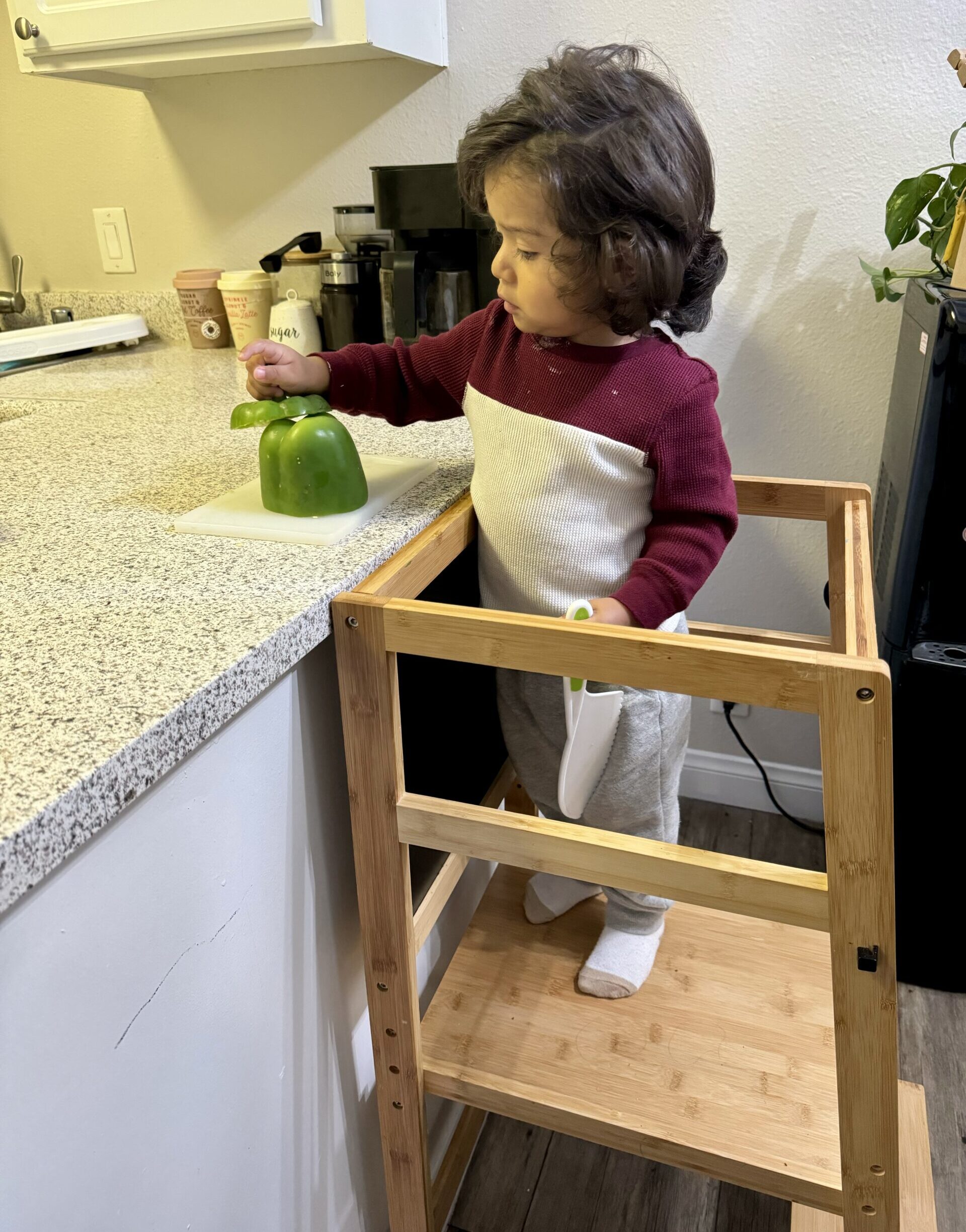If you’ve landed on this page, you are likely considering the options of Dropshipping vs Amazon FBA. Well, you’re in the right place!
My hopes is that by the end of this guide, you will feel equipped with enough information to confidently choose the business model that aligns best with your goals: whether it’s dropshipping or selling on Amazon.
But first, here’s a bit about me: I started my ecommerce journey as a stay-at-home mom. I launched my first product in 2018 and officially got into the game of Amazon FBA and dropshipping.
I’ve made rookie mistakes that ended up being costly. But they also taught me some valuable lessons.
So, take it from me. Before deciding which business model to go for, here are some key questions to keep in mind:
- Do you have a big upfront investment or are looking to start small?
- Have you thought about what niche or product category you’re really passionate about, or are your options open?
- Are you looking to build a long-term business or just test out some products quickly?
- How much time and effort are you ready to put into your online business each day or week?
- Are you okay with dealing directly with customers, handling their questions and returns, or would you rather let someone else handle that side of things?
- Have you got a plan for getting the word out about your products, like using social media or ads?
After considering these questions, you’ll have a clearer sense of the differences between Dropshipping vs Amazon FBA.
How a Dropshipping Business Works
You find products from dropshipping suppliers and list them for sale. When a customer places an order on your eCommerce store – the dropshipper then ships the item directly to them, and you only pay for the product after the customer has paid you. So, finding a good drop shipping supplier is pivotal for the success of your business, since you’ll be closely collaborating.

Image by Amazon Seller Central.
The drawback is that you’ll be sharing your profits with the dropshipper, making them potentially lower. However, even with this drawback, dropshipping still remains a feasible option for those with very minimal capital.
In fact, you can start a dropshipping venture with just $100, a fraction of the 10K required for Amazon FBA.
In addition to that, the only other aspect you’ll need to focus on is dedicating time and effort into marketing and social media to drive sales.
Pros of Dropshipping
- No need to carry inventory: You don’t have to invest in storing products, which saves costs and space. You simply list products on your online store and fulfill orders as they come in.
- Ability to test products: You can experiment with different products to see what resonates with your target audience before committing to large quantities.
- Low overhead costs: All you need to run your dropshipping business is a laptop and internet connection, making it a cost-effective option.
- No shipping hassles: Your dropshipping supplier takes care of shipping logistics, including packaging and delivery.
- Minimal starting capital: Since you don’t need to purchase inventory upfront, you can launch your business with minimal investment. You could allocate your budget towards website development and marketing.
Cons of Dropshipping
- Difficult to scale:
You may need to invest in social media advertising or influencer partnerships to reach a larger audience. - Highly competitive:
Market saturation makes it challenging to stand out from competitors, unless you think innovatively and creatively. - Low profit margins:
You may only make a small markup on each sale, limiting your earning potential. - Customer service responsibilities:
As the middleman for the customer and supplier, you’re responsible for addressing customer inquiries, processing returns, and ensuring timely shipping. - Limited quality control:
Since you don’t physically handle the products, you have less control over product quality and fulfillment. - Lack of control over shipping speed:
Your dropshipping supplier determines shipping times and methods, which can affect customer satisfaction.
Dropshipping Is a Great Fit For You If:
- You’re operating on a tight budget.
- You prefer to minimize financial risks.
- You’re confident in your ability to handle customer care.
- You’re eager to explore and test various products.
- You’re willing to dedicate time to leverage social media for cost-effective traffic generation.
Dropshipping offers the freedom to explore new products without the risk of significant financial loss from bulk orders. Once you’ve determined what product is profitable, you can transition to FBA for a more sustainable, long-term approach.
In a nutshell, the dropshipping business model is ideal for aspiring entrepreneurs seeking to launch an online business without hefty upfront costs.
What Is Amazon FBA
Amazon is the largest eCommerce marketplace globally, and around one-third of the US population is on Amazon Prime. That’s why practically every online retailer wants to be on Amazon. It gives you access to a huge customer base who trust Amazon, making it a top choice for sellers.
Fulfillment by Amazon (FBA) is a service provided by Amazon that takes care of everything for sellers: storing inventory, fulfilling orders, handling returns, and managing customer service. Here’s a video showing how it works:
Pros of Amazon FBA
- Access to Global Audience:
Since Amazon operates in many nations, sellers can reach a global audience without having to establish a physical presence in those regions. - Fulfillment Services:
Amazon takes care of your products’ shipping, packing, and storage. So you have more time to devote to other parts of the business. - Prime Eligibility:
Amazon-fulfilled products qualify for Prime shipping, which could bring in more customers because of the quick and dependable shipping choices. - Scalability:
Since sellers don’t have to worry about handling fulfillment and logistics as their sales volume rises, FBA enables them to grow their businesses quickly.
Cons of Amazon FBA
- High competition:
As FBA is so popular, there is more competition on the site. Being unique within the millions of other sellers can be difficult. - Very expensive to start:
This business requires high upfront costs for things like buying inventory in bulk, PPC marketing costs, and handling the fees that come with using Amazon’s services. - High selling fees:
Amazon charges sellers a number of costs, including fulfillment, storage, and referral fees. - Long-term storage fees:
Amazon charges additional fees for storing inventory in its warehouses for an extended period. - Risk of Financial Loss:
Despite the potential for success, there’s also the possibility of significant financial loss.
Amazon FBA Is a Great Fit For You If:
- You have a starting capital of $5000 – $10,000.
- You’re comfortable with taking risks.
- You don’t want to handle customer service issues.
- Your goal is to access Amazon’s global audience.
- You want to start a long term business with sustainable cash flow.
Amazon FBA can open doors for people who have the necessary startup capital and can adapt to the high competition on the marketplace. There are good chances for substantial earnings, scalability, and success.
This is a tough business but if you play your cards right you can either build a stable lifestyle business or a proper brand that becomes an asset and an acquisition target.
Final Thoughts
By now, you should have gotten clarity on the distinctions between Dropshipping vs Amazon FBA. Both are excellent business models, if you are looking to breakaway from the 9 to 5 and be financially free.
I launched my first product in 2018 thru Amazon, and if i could turn back the clock, I would have chosen Dropshipping.
Here’s why.
Dropshipping allows you to find out what works and what doesn’t by drop shipping various products. This will allow you to know if a product will work for you, before investing $5000-$10,000 in inventory on a product, which is the risky part.
In addition, you must also become your own marketer and bring your own traffic. Learning this skill will open the opportunity to build your brand and grow your own following, without having to rely on 3rd party platforms in the long run.
What are your thoughts on Dropshipping vs Amazon FBA? Share them in the comments below.








